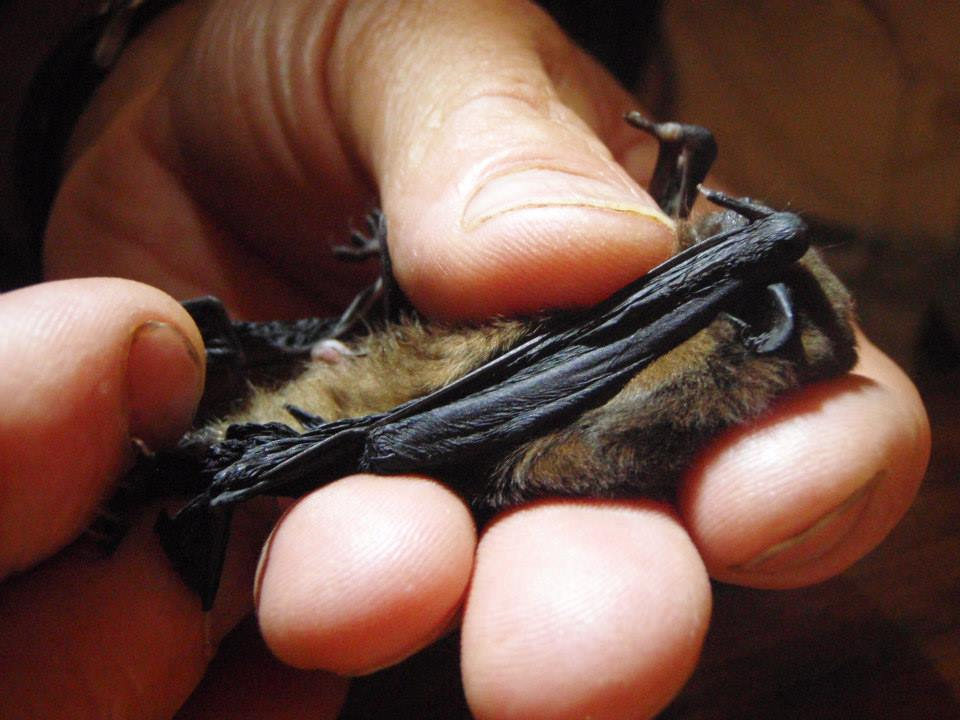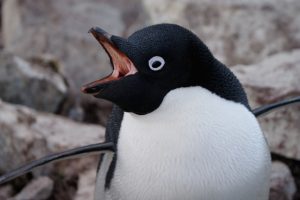Tracking pond-flitting pekapeka gets technical
Over the past six weeks I have spent many evenings outside keeping an eye out for pekapeka, the long-tailed bats flitting like giant butterflies past the house and over the pond.
After many evenings of observing bats close by, I mentioned it to Jono Moore, the conservation ecologist who does bat population monitoring for the Department of Conservation. Jono came and had a look and then set up an automatic bat recorder, which meant I didn’t have to stay up all night to get a better picture of all the action and movements. The recordings over two nights showed an impressive number of bats pass near our pond from two locations.

A long-tailed bat on D’Urville Island.
Subsequently, a harp trap was set up on the track near our pond. A harp trap is a device specifically developed for the capture of bats without harming them, and is made of two parallel sets of perpendicular fishing lines. Unlike mist nets or hand nets, from which bats would need to be untangled, the bats just drop down between the two layers of fishing lines into a cloth bag where they rest until being collected in the morning.
The trap was put up one evening and 10 juvenile bats were captured in the early hours of the following morning. This was great news, as it indicated that there was a bat colony nearby. Up until now, we thought that there may just be a few male bats hanging out around our place just outside Geraldine, away from the bat colonies at Kakahu Bush, Raincliff or Hanging Rock. Attempts some years ago by the experts to capture bats were unsuccessful.
A transmitter was subsequently fitted to one of the bats. This was tracked back to the roost sites and enabled the ecologist to get an idea of the size of the colony by observing them leaving the roost at dusk. I was away from home at the time this happened, so I was eager to learn more on my return.
The bat colony seems to have made their home each night in a different matai tree in Talbot Forest, perhaps a clever way of keeping away from any potential predators. In other areas in South Canterbury, the bats stay in the same roost site for several nights. They may not have the luxury of changing as suitable roost sites are limited. Willow trees with cavities provide good roost sites in areas where there are no mature native trees such as matai, totara or kanuka, but because of land intensification, many willows have been removed and with it potential roost sites along rivers.
Around 18 bats were counted coming out of the roost the night I returned. Then the transmitter eventually dropped off, which is the usual course of events.
So from now on it is back to observation, to find out where the bats may roost. Some nights ago I observed two groups of bats flying in different directions away from the area where they may have roosted.
Generally in the evening birds stop singing, then there is a pause for a little while before the bats come flitting around. A few nights ago, the birds were still chirping away at 9.30pm and the bats were flying about at the same time.
South Canterbury supports the only known long›tailed bat population on the east coast of the South Island. Geraldine is one of the few towns where it is possible to see pekapeka, long› tailed bats.
Regular predator control work has been undertaken in the Talbot Forest Scenic Reserve and Riddell’s Reserve by local volunteers over the last couple of years in conjunction with the Talbot Forest Working Group and the Department of Conservation. Further predator control inadjacent rural and urban areas will potentially improve habitat not only for bats but also the birds, lizards and geckos. We can all contribute by doing our bit towards predator control. To have a thriving population of bats in and around the forest, adjacent reserves and bush remnants would be a positive outcome and of interest to many.



